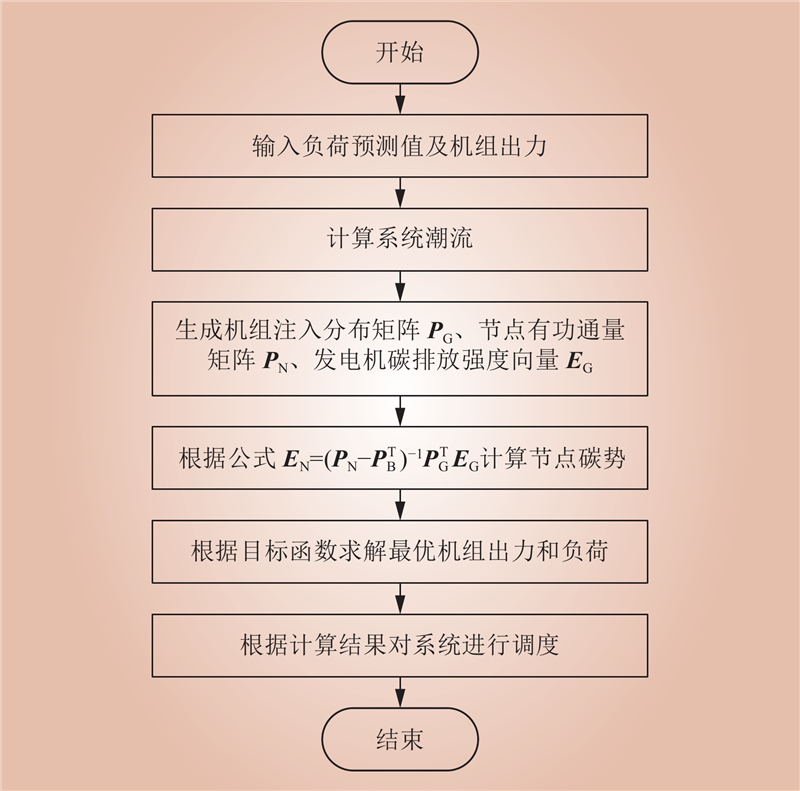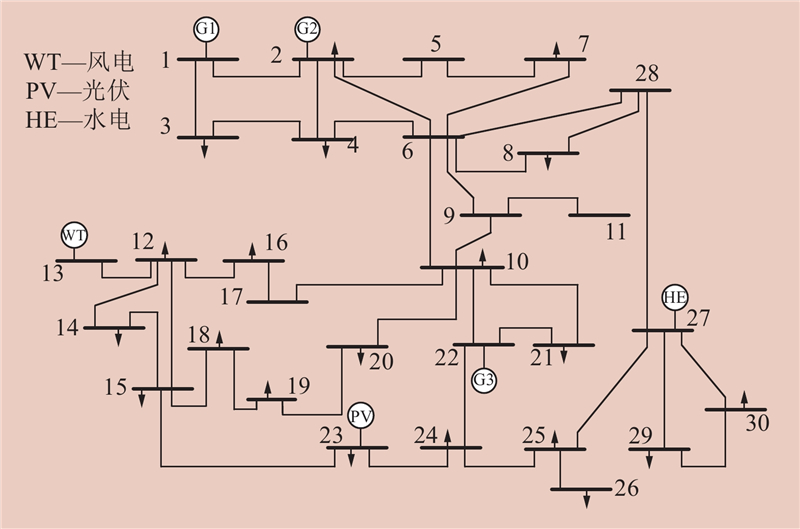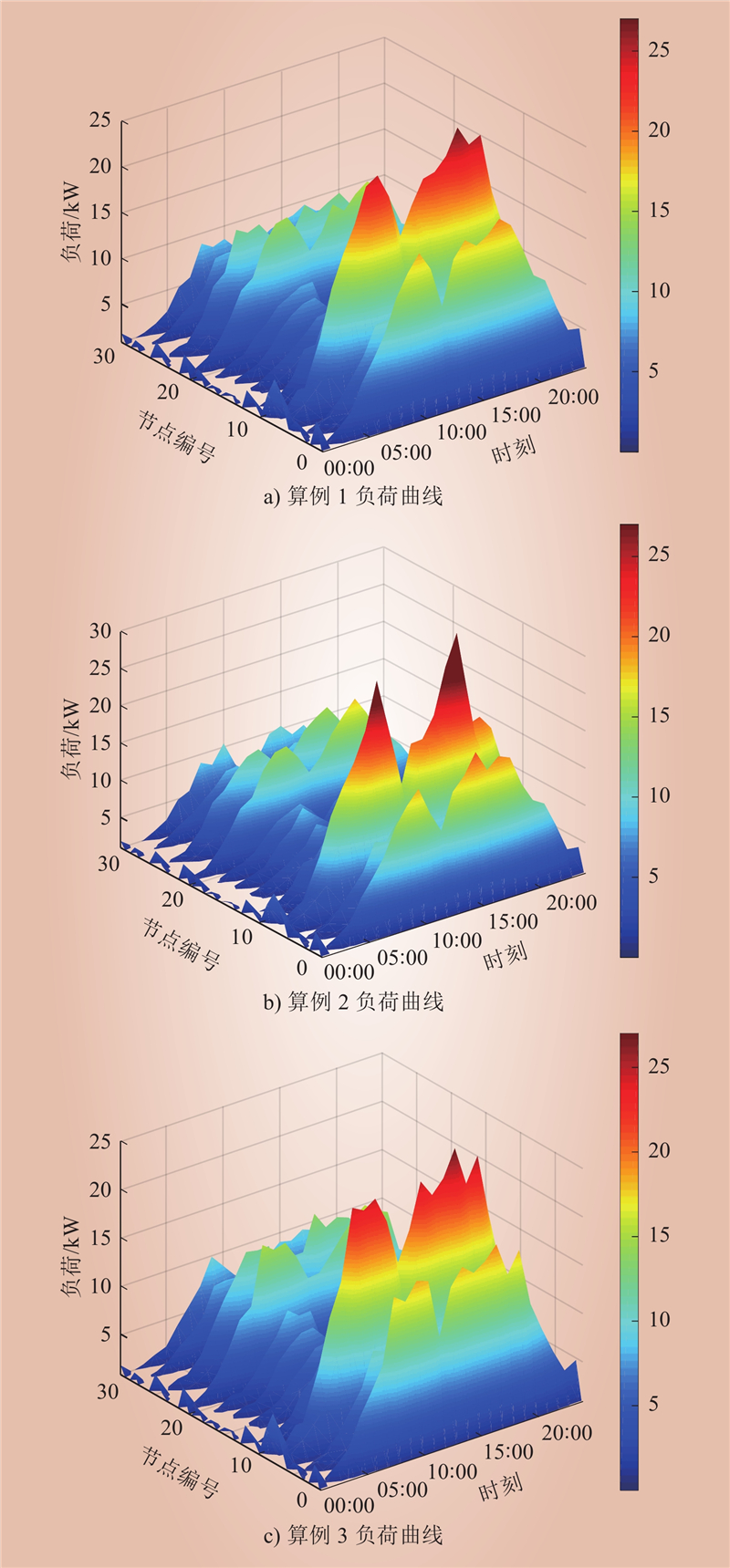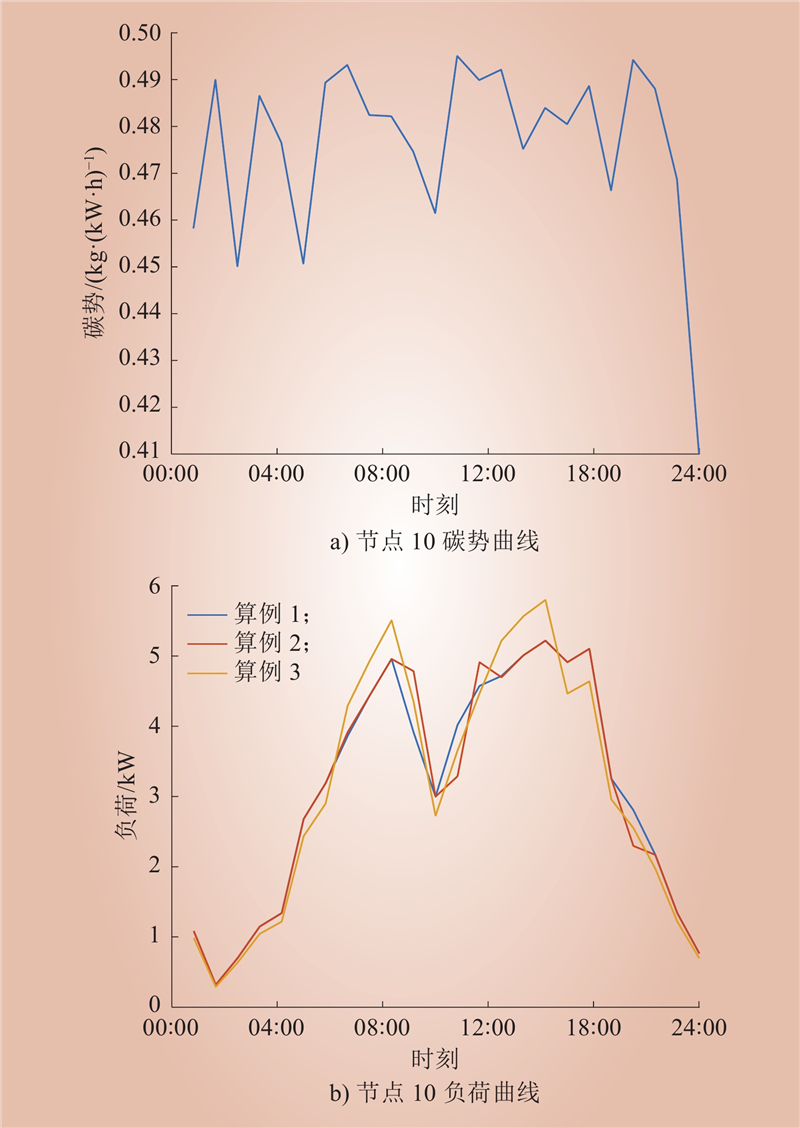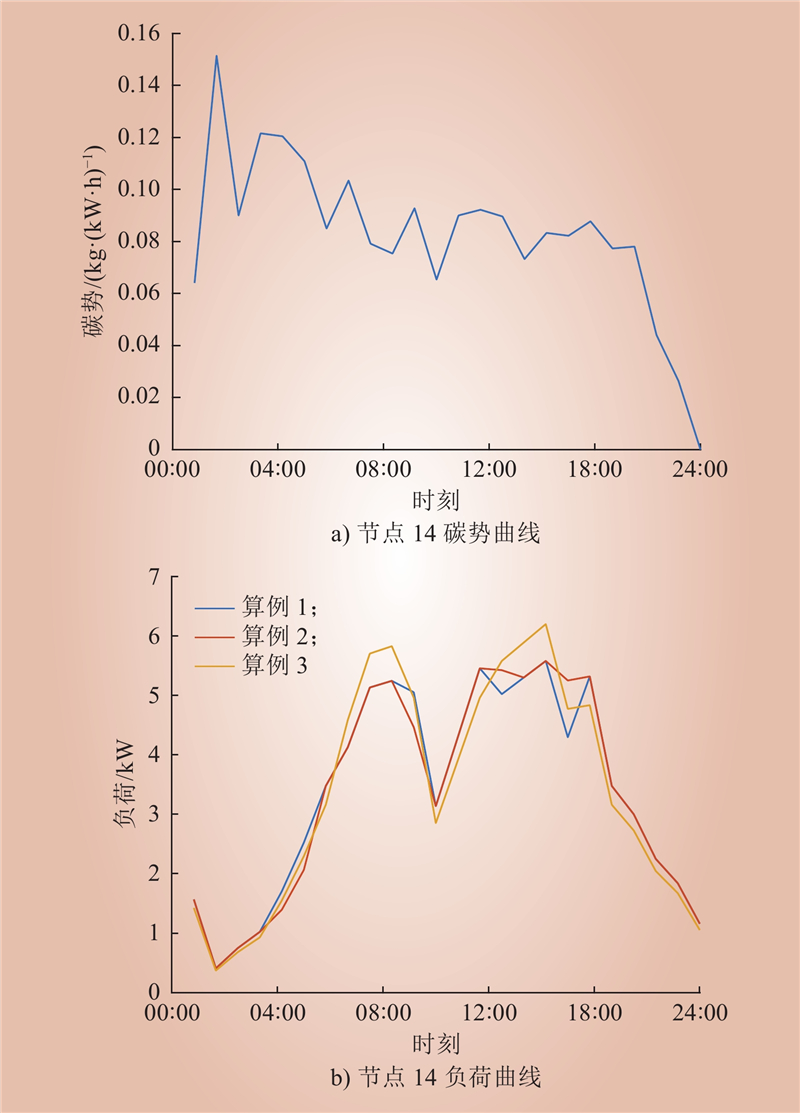| 1 |
赵国涛, 钱国明, 王盛. “双碳” 目标下绿色电力低碳发展的路径分析[J]. 华电技术, 2021, 43 (6): 11- 20.
|
|
ZHAO Guotao, QIAN Guoming, WANG Sheng. Analysis on green and low-carbon development path for power industry to realize carbon peak and carbon neutrality[J]. Huadian Technology, 2021, 43 (6): 11- 20.
|
| 2 |
史作廷, 时希杰. 努力推动实现碳达峰碳中和目标[J]. 红旗文稿, 2021, (20): 25- 28.
|
|
SHI Zuoting, SHI Xijie. Strive to promote the goal of carbon neutrality in peak carbon dioxide emissions[J]. Red Flag Manuscript, 2021, (20): 25- 28.
|
| 3 |
周原冰, 杨方, 余潇潇, 等. 中国能源电力碳中和实现路径及实施关键问题[J]. 中国电力, 2022, 55 (5): 1- 11.
|
|
ZHOU Yuanbing, YANG Fang, YU Xiaoxiao, et al. Realization pathways and key problems of carbon neutrality in China’s energy and power system[J]. Electric Power, 2022, 55 (5): 1- 11.
|
| 4 |
周天睿, 康重庆, 徐乾耀, 等. 电力系统碳排放流的计算方法初探[J]. 电力系统自动化, 2012, 36 (11): 44- 49.
|
|
ZHOU Tianrui, KANG Chongqing, XU Qianyao, et al. Preliminary investigation on a method for carbon emission flow calculation of power system[J]. Automation of Electric Power Systems, 2012, 36 (11): 44- 49.
|
| 5 |
陈家兴, 王春玲, 刘春明. 基于改进碳排放流理论的电力系统动态低碳调度方法[J]. 中国电力, 2023, 56 (3): 162- 172.
|
|
CHEN Jiaxing, WANG Chunling, LIU Chunming. Dynamic low-carbon dispatching method of power system based on improved carbon emission flow theory[J]. Electric Power, 2023, 56 (3): 162- 172.
|
| 6 |
陈咏城, 唐雯, 马旭涛. 火力发电厂碳排放测量及分析[J]. 电站辅机, 2021, 42 (3): 14- 17.
DOI
|
|
CHEN Yongcheng, TANG Wen, MA Xutao. Measurement and analysis of carbon emission in thermal power plant[J]. Power Station Auxiliary Equipment, 2021, 42 (3): 14- 17.
DOI
|
| 7 |
王霂晗. 火电厂碳排放监测体系与核算方法的研究[D]. 南京: 南京信息工程大学, 2020.
|
|
WANG Muhan. Study on monitoring system and accounting method of carbon emission in thermal power plant[D]. Nanjing: Nanjing University of Information Science & Technology, 2020.
|
| 8 |
孙英云, 侯建兰, 何国庆, 等. 一种考虑备用影响的光伏发电碳减排量计算方法[J]. 电力系统自动化, 2014, 38 (17): 177- 182.
|
|
SUN Yingyun, HOU Jianlan, HE Guoqing, et al. A carbon emission reduction calculation method of photovoltaic considering influence of reserve[J]. Automation of Electric Power Systems, 2014, 38 (17): 177- 182.
|
| 9 |
龚道仁, 陈迪, 袁志钟. 光伏发电系统碳排放计算模型及应用[J]. 可再生能源, 2013, 31 (9): 1- 4, 9.
DOI
|
|
GONG Daoren, CHEN Di, YUAN Zhizhong. Mathematics calculation model and application of CO2 emission [J]. Renewable Energy Resources, 2013, 31 (9): 1- 4, 9.
DOI
|
| 10 |
郭敏晓. 风力、光伏及生物质发电的生命周期CO2排放核算[D]. 北京: 清华大学, 2012.
|
|
GUO Minxiao. Life cycle CO2 emission accounting of wind power, photovoltaic and biomass power generation[D]. Beijing: Tsinghua University, 2012.
|
| 11 |
陈晓科, 周天睿, 李欣, 等. 电力系统的碳排放结构分解与低碳目标贡献分析[J]. 电力系统自动化, 2012, 36 (2): 18- 25.
|
|
CHEN Xiaoke, ZHOU Tianrui, LI Xin, et al. A review of CIRED 2011 on development of distributed energy resources and energy efficiency improvement on customer side[J]. Automation of Electric Power Systems, 2012, 36 (2): 18- 25.
|
| 12 |
周天睿, 康重庆, 徐乾耀, 等. 电力系统碳排放流分析理论初探[J]. 电力系统自动化, 2012, 36 (7): 38- 43, 85.
|
|
ZHOU Tianrui, KANG Chongqing, XU Qianyao, et al. Preliminary theoretical investigation on power system carbon emission flow[J]. Automation of Electric Power Systems, 2012, 36 (7): 38- 43, 85.
|
| 13 |
HUANG W J, ZHANG N, CHENG Y H, et al. Multienergy networks analytics: standardized modeling, optimization, and low carbon analysis[J]. Proceedings of the IEEE, 2020, 108 (9): 1411- 143.
DOI
|
| 14 |
CHENG Y H, ZHANG N, WANG Y, et al. Modeling carbon emission flow in multiple energy systems[J]. IEEE Transactions on Smart Grid, 2019, 10 (4): 3562- 3574.
DOI
|
| 15 |
张钦, 王锡凡, 王建学, 等. 电力市场下需求响应研究综述[J]. 电力系统自动化, 2008, 32 (3): 97- 106.
|
|
ZHANG Qin, WANG Xifan, WANG Jianxue, et al. Survey of demand response research in deregulated electricity markets[J]. Automation of Electric Power Systems, 2008, 32 (3): 97- 106.
|
| 16 |
李锦飚, 陈湘萍. 需求侧响应技术浅析[J]. 中外能源, 2021, 26 (5): 16- 22.
|
|
LI Jinbiao, CHEN Xiangping. Analysis of demand side response technology[J]. Sino-Global Energy, 2021, 26 (5): 16- 22.
|
| 17 |
李伟, 韩瑞迪, 孙晨家, 等. 基于用电偏好的可平移负荷参与需求响应最优激励合同与激励策略[J]. 中国电机工程学报, 2021, 41 (S1): 185- 193.
DOI
|
|
LI Wei, HAN Ruidi, SUN ChenJia, et al. An optimal incentive contract and strategy of shiftable loads participation in demand response based on user electricity preference[J]. Proceedings of the CSEE, 2021, 41 (S1): 185- 193.
DOI
|
| 18 |
原睿萌, 范绚然, 姬广龙, 等. 计及价格型需求响应负荷响应量与风电出力相关性的含风电电力系统优化调度研究[J]. 可再生能源, 2018, 36 (3): 429- 437.
|
|
YUAN Ruimeng, FAN Xuanran, JI Guanglong, et al. Study on the optimal scheduling of wind power integrated systems considering the correlation between response quantity of price-based demand response load and wind power output[J]. Renewable Energy Resources, 2018, 36 (3): 429- 437.
|
| 19 |
徐慧慧, 田云飞, 缪猛, 等. 计及碳交易和需求响应的虚拟电厂低碳经济调度[J]. 智慧电力, 2023, 51 (8): 1- 7.
|
|
XU Huihui, TIAN Yunfei, MIAO Meng, et al. Low-carbon economic dispatching of virtual power plant considering carbon trading and demand response[J]. Smart Power, 2023, 51 (8): 1- 7.
|
| 20 |
梁宁, 方茜, 徐慧慧, 等. 基于节点碳势需求响应的电力系统双层优化调度[J/OL]. 电力系统自动化: 1–21[2023-10-25]. http://kns.cnki.net/kcms/detail/32.1180.TP.20230522.1927.002.html.
|
|
LIANG Ning, FANG Qian, XU Huihui, et al. Bi-level optimal dispatch of power system based on demand response considering nodal carbon intensity[J/OL]. Automation of Electric Power Systems: 1–21[2023-10-25]. http://kns.cnki.net/kcms/detail/32.1180.TP.20230522.1927.002.html.
|
| 21 |
严中华, 王建功, 朱英刚, 等. 考虑碳排放流理论的风-碳捕集-电转气联合新型中长期调度方式[J]. 智慧电力, 2022, 50 (6): 14- 21.
|
|
YAN Zhonghua, WANG Jiangong, ZHU Yinggang, et al. New medium-long term dispatching mode of wind-carbon capture-P2G combined system considering carbon emission flow theory[J]. Smart Power, 2022, 50 (6): 14- 21.
|
| 22 |
张笑演, 王橹裕, 黄蕾, 等. 考虑扩展碳排放流和碳交易议价模型的园区综合能源优化调度[J]. 电力系统自动化, 2023, 47 (9): 34- 46.
|
|
ZHANG Xiaoyan, WANG Luyu, HUANG Lei, et al. Optimal dispatching of park-level integrated energy system considering augmented carbon emission flow and carbon trading bargain model[J]. Automation of Electric Power Systems, 2023, 47 (9): 34- 46.
|
| 23 |
赵文会, 李阮, 李鑫明, 等. 中国电力行业碳排放的责任分摊[J]. 科技管理研究, 2017, 37 (1): 227- 232.
|
|
ZHAO Wenhui, LI Ruan, LI Xinming, et al. Carbon emissions allocation responsibility for China’s electric power industry[J]. Science and Technology Management Research, 2017, 37 (1): 227- 232.
|
| 24 |
邓逸天, 王宇辉, 黄景光, 等. 考虑需求响应的含P2G电-气综合能源系统优化调度[J]. 智慧电力, 2020, 48 (12): 8- 13, 32.
DOI
|
|
DENG Yitian, WANG Yuhui, HUANG Jingguang, et al. Optimal dispatch of integrated electricity-gas system with power to gas considering demand response[J]. Smart Power, 2020, 48 (12): 8- 13, 32.
DOI
|
| 25 |
ALBADI M H, EL-SAADANY E F. Demand response in electricity markets: an overview[C]//2007 IEEE Power Engineering Society General Meeting. Tampa, FL, USA. IEEE, 2007: 1–5.
|
| 26 |
张虹, 孟庆尧, 王明晨, 等. 考虑火电机组参与绿证购买交易的含氢综合能源系统经济低碳调度策略[J]. 电力系统保护与控制, 2023, 51 (3): 26- 35.
|
|
ZHANG Hong, MENG Qingyao, WANG Mingchen, et al. Economic and low-carbon dispatch strategy of a hydrogen-containing integrated energy system considering thermal power units participating in green certificate purchase trading[J]. Power System Protection and Control, 2023, 51 (3): 26- 35.
|



